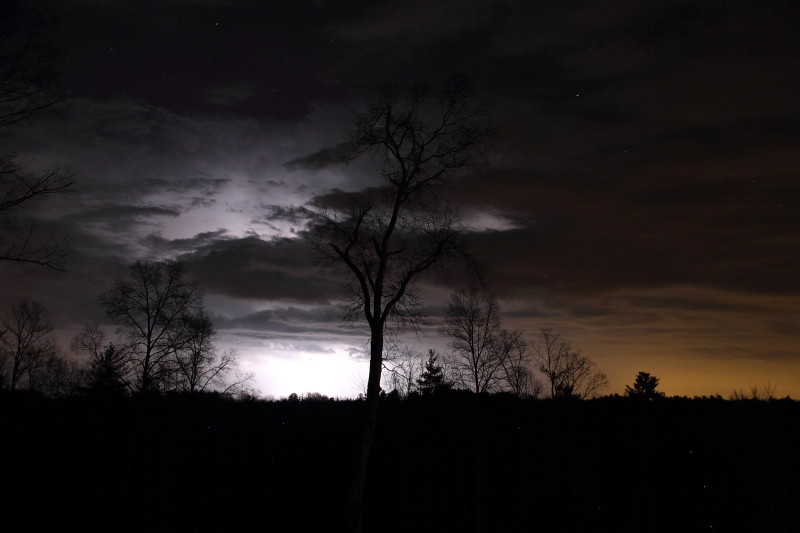EDIT--BTW...by dead pixel, I meant hot/stuck pixel (changes made below).
So an odd spring thunderstorm rolled through at about 11 pm last night. Of course, I ran out to take a few photos. In looking at them this morning, to my surprise, I see hot pixels.
30 sec, f/8, ISO 200, Long Exp Noise Reduction set to auto....I increased exposure +2 in this image to see them more clearly....
IMG_1964 small by kayaker72, on Flickr
IMG_1964 rc by kayaker72, on Flickr
IMG_1964 lc by kayaker72, on Flickr
BTW---processing to jpeg is making them smaller and lose a little of their color. In RAW, they are clearly red, blue, green or white and are very apparent.
The reason I am surprised is that I've tested my sensor before. I have taken 30 sec exposures with the cap on. And I found 3-4 small areas of hot pixels, only visible when really looking for them. Something I could live with. But, nothing like I see in the photo above.
So, the question gets to be, are my hot pixels getting worse or can sensor dust...or something else, cause what I am seeing. The reason I ask is that in ~2 yrs and ~22,000 exposures....I've never cleaned my sensor.
Thanks for any insight. I'll work removing the hot pixels....








 Reply With Quote
Reply With Quote

 Ha...I like it. My subconscious is very wise.....but I think it is more than that. It was a freak thunderstorm that caused me go take pictures...my subconscience couldn't cause a thunderstorm....I am thinking there are significant forces that want me to get a 5DIII.....
Ha...I like it. My subconscious is very wise.....but I think it is more than that. It was a freak thunderstorm that caused me go take pictures...my subconscience couldn't cause a thunderstorm....I am thinking there are significant forces that want me to get a 5DIII.....

